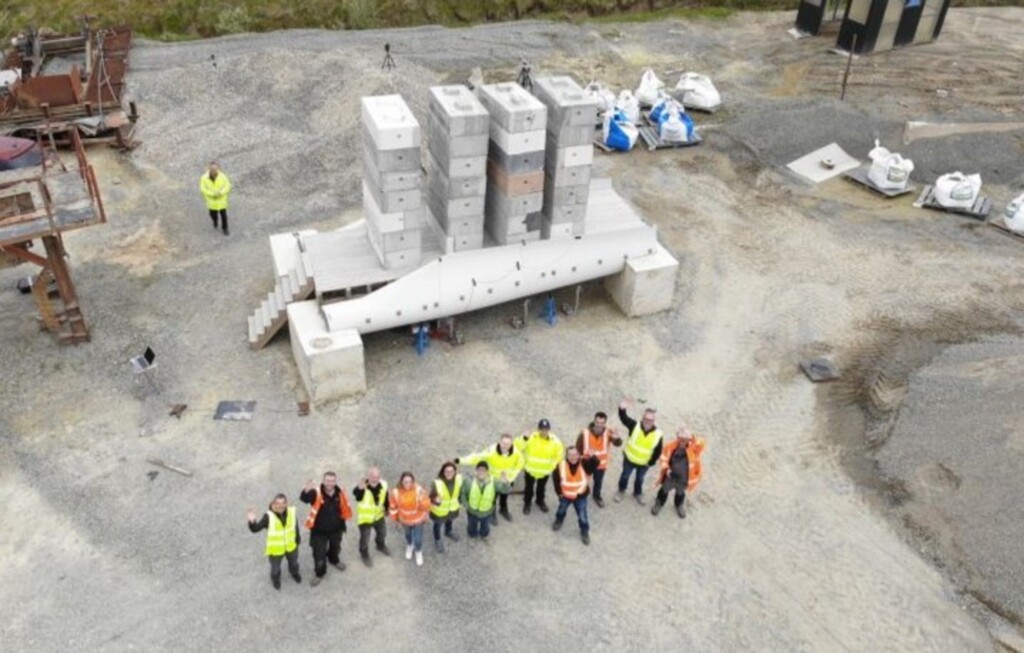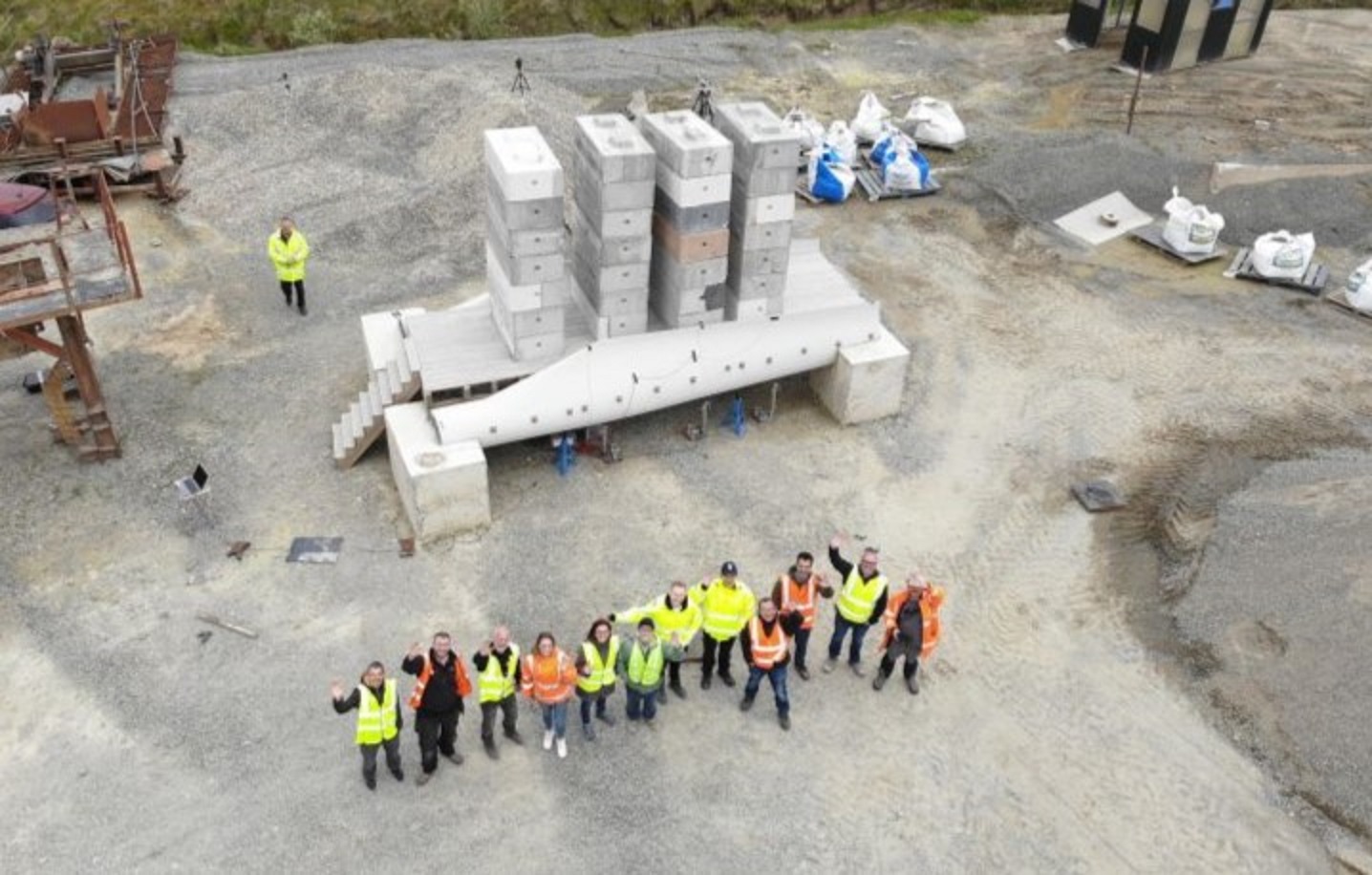
Wind turbine blades set to be landfilled or incinerated, are being turned into footbridges that can hold the weight of a 30-tonne digger.
Currently, there are around 11,000 wind turbines in the UK, and estimates suggest that 450 blades will be decommissioned in Ireland by 2030, creating tons of non-recyclable waste.
In a bid to avoid filling up the landfill, a transatlantic research network led by Queen’s University Belfast called ‘Re-Wind’ was set up to find new ways to repurpose the blades. Working together, geography experts, design architects, and engineers have discovered that by using just two turbine blades they can create a bridge.
Already, the team has successfully built two footbridges in Ireland—a 21-foot (7-meter) bridge in Draperstown, Northern Ireland, and a 15-foot (5-meter) bridge in Cork in the Republic of Ireland.
The bridges, which are made from two wind turbine blades, are known as ‘BladeBridges’ and passed rigorous testing in May. A third bridge is also underway in Atlanta Georgia.
Over the last 30 years, wind farm development has been scaled up globally, but this is now posing a major environmental challenge. The turbine blades, which are non-biodegradable, have a lifespan of just 20-25 years. After this, they are either landfilled or incinerated.
The researchers have also been looking at ways to use the blades to build bus shelters, barriers, street furniture, and telecommunications towers.
“It has been incredibly exciting and rewarding to work on this project,” commented Professor. Marois Soutos from Queen’s University. “As researchers, we like to push things as far as we possibly can in order to come up with the best solution available. In this instance, we’ve been able to create a footbridge from two wind turbine blades which is able to hold 30 tonnes—that’s the weight of a digger.”
“This could have a very positive impact for society going forward as we are only going to have more of these blades becoming decommissioned as the years go on.”
For the Draperstown bridge, computer-aided modeling was used to come up with the structural design, but the researchers had concerns that the bolts used might tear when weight was added. It was tested by loading it with 34 blocks, each weighing 1,100kg and the results were very positive—the bridge was able to take much more weight than expected.
MORE CREATIVE SOLUTIONS: Company Devises Ingenious Method of Repurposing Old Wind Turbines: ‘The perfect time’
“We designed the bridge to avoid failures and during testing there was no tearing, no failure at all,” said Kenny McDonald, Technical Manager in the School of Natural and Built Environment at Queen’s University. “We kept loading these concrete blocks and we could not get the bridge to fail.”
“We’re continuing to work with the Network and our colleagues in the USA on the bridge in Atlanta. After this, we would like to see if more blades can be added to make it longer. We’d like to join two together and increase the length. We’re hoping to secure further funding to do this,” he said.
Part of the Network is University College Cork and Munster Technological University, and they’ve taken the project in a different direction and made a spinoff from the Re-Wind research, called BladeBridge. They’ve been looking at a variety of uses for the blades.
MORE WIND FARM NEWS: Lebanese Man Builds Wind Turbine from Recycled Plastic–Producing Electricity for his Family and Neighbors
“We are partnering with well-known designers here in Ireland to create a portfolio of durable and sustainable products, such as greenway furniture and bridges,” said BladeBridge co-founder Dr. Angie Nagle. “Our first customer was Mayo County Council, who recently installed a suite of our furniture on the greenway extension in Achill.”
The bridge in Cork was completed in January 2022 and funded under the Irish Department of Transport’s Project Ireland 2040 initiative.
With a 20-year lifespan, there will be around 8.6 million metric tons of blades being decommissioned worldwide by 2042. Innovative solutions have to be found to keep them out of landfills, but it’s worth the effort as most blades are made from fiberglass, an expensive material to buy and shape.
SHARE This Great Recycling Idea With Your Green Brains…




















